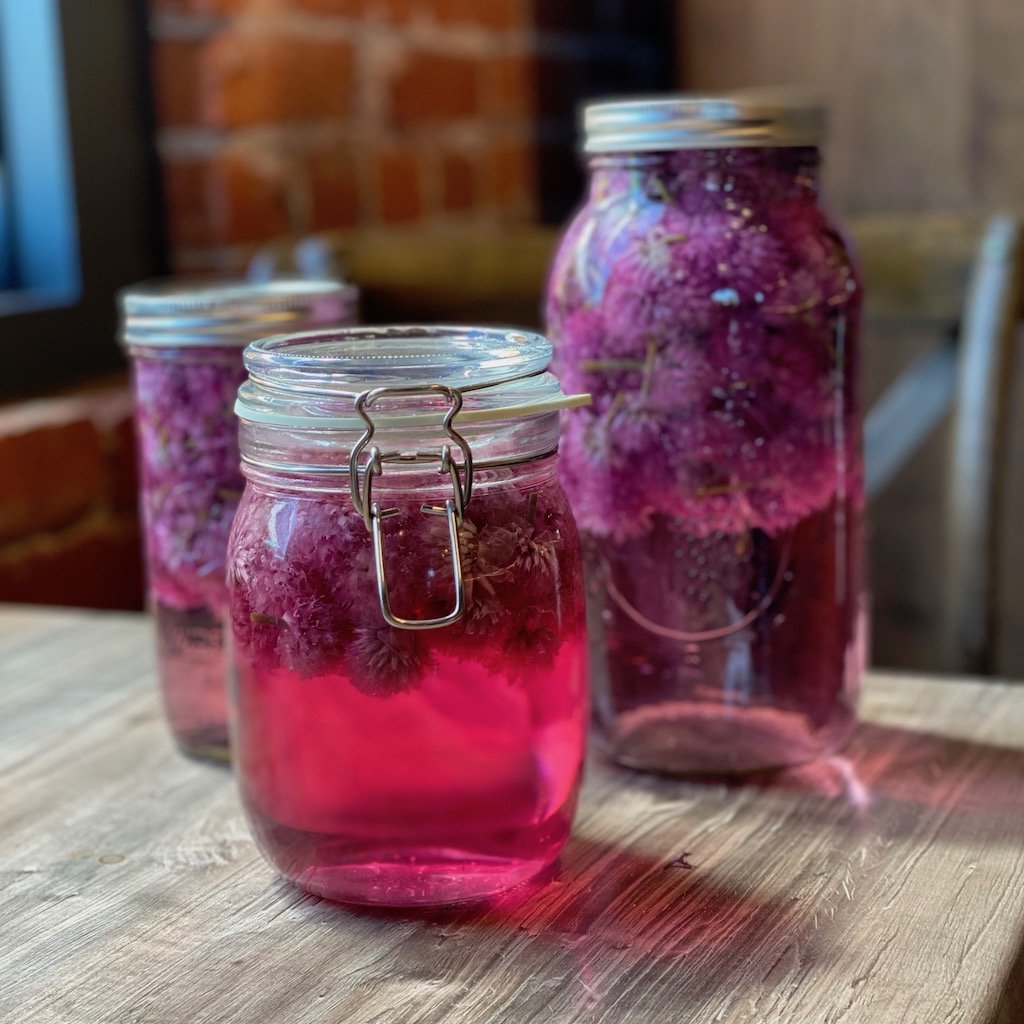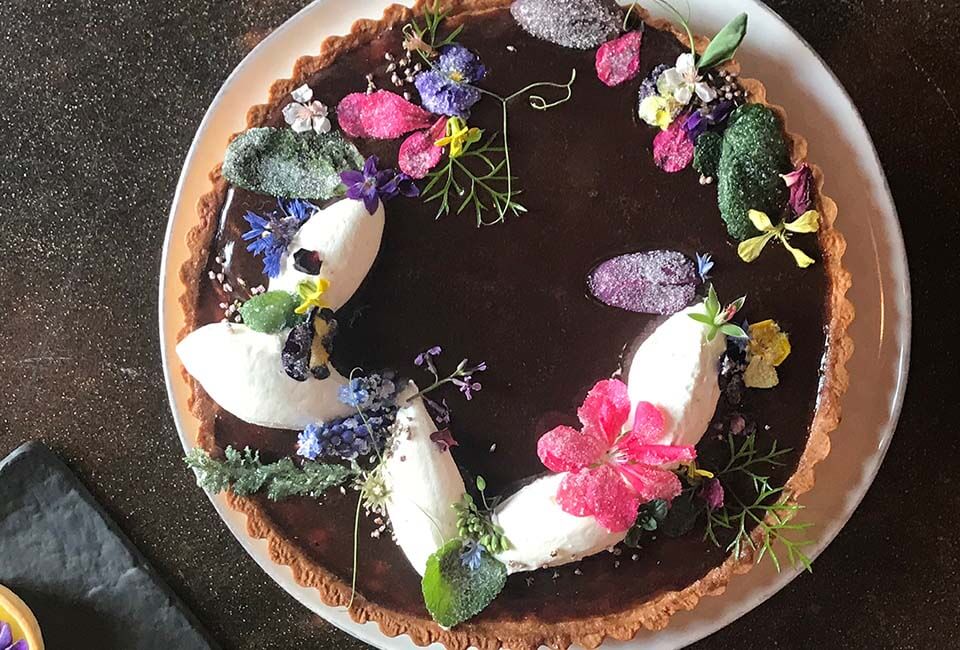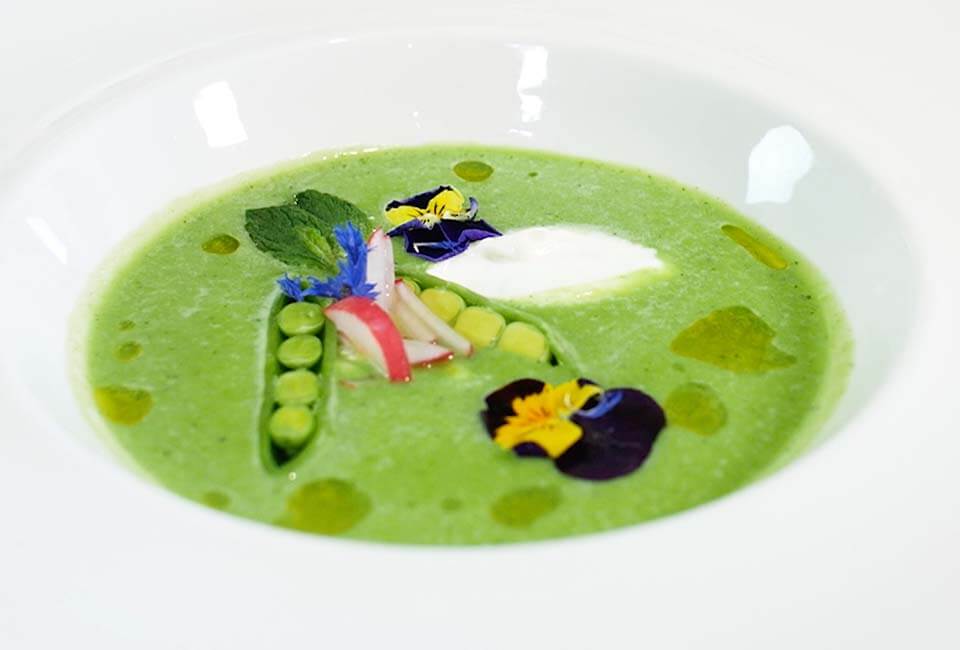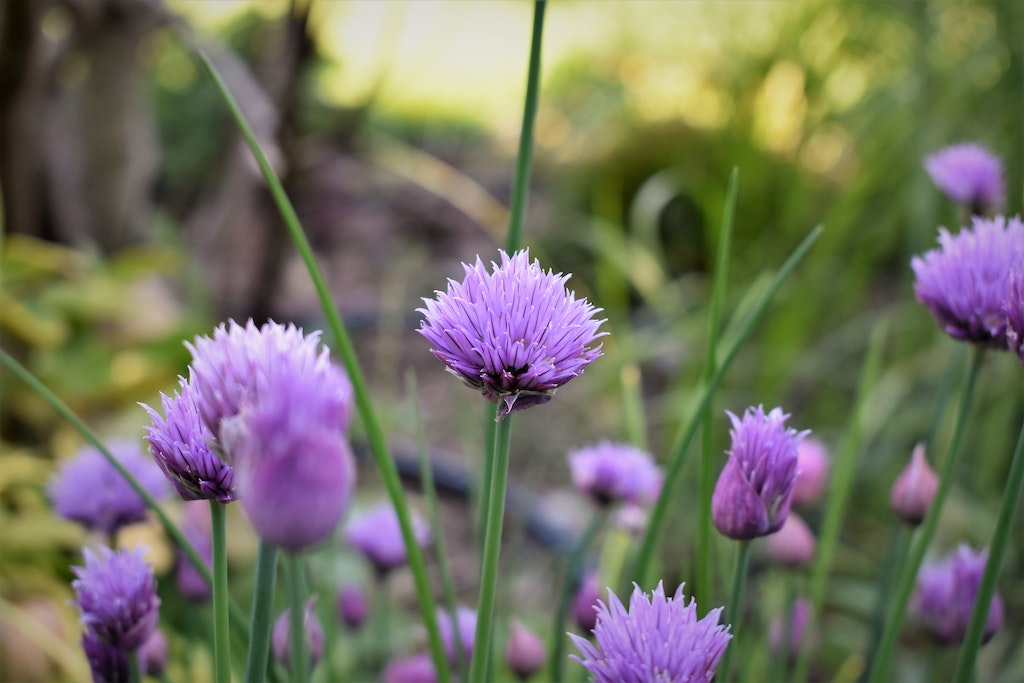
For as long as I can remember, I’ve been fascinated with using aromatic blossoms in ways that preserve their essence and fragrance. (Of course, I always do my research to ensure the blossoms and blooms are not toxic.) You might be surprised to know how many blossoms you pass daily are indeed perfect for using in the kitchen!
For example, lilacs, which are so prevalent in Colorado this very moment, can be used to flavor a vinegar. That vinegar can then be used to make a vinaigrette for a simple strawberry spinach salad. You can also candy lilac blossoms and use them in baking, or press and dry them and use them on top of shortbread. The possibilities are so exciting.
Every year at this time I hound Ginger about the chive blossoms that spring up on the Ginger and Baker farm. “Do you have blossoms?” I ask, and the answer has continued to be “not yet.” Up until this week, that is, when Ginger brought in a big bagful. It’s chive blossom vinegar time!
There is something magical about taking even the smallest harvest of blossoms, pouring a few cups of a vinegar over them and watching as the jar turns into something otherworldly. The bright transparent purple color is fantastic, and the chive flavor is intoxicating. This simple act of preserving the season, this moment of transformation, is the essence of food, cooking and honoring our resources. Chive blossom season, as with any blossom, is fleeting and to capture it to use throughout later months brings me joy.
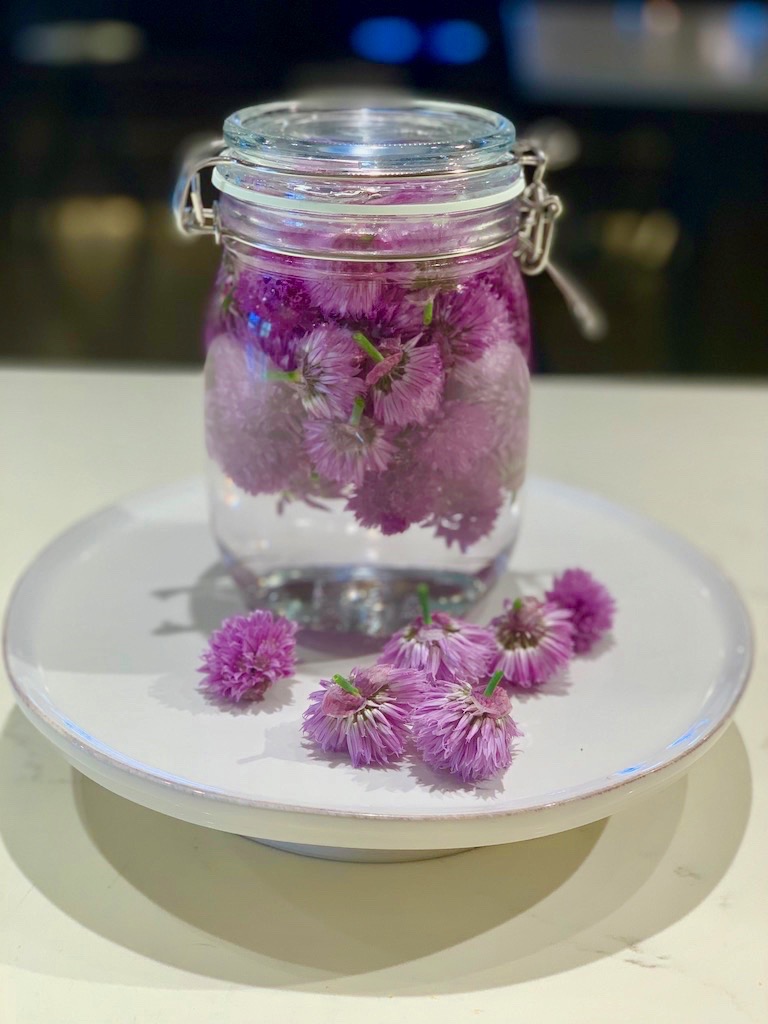
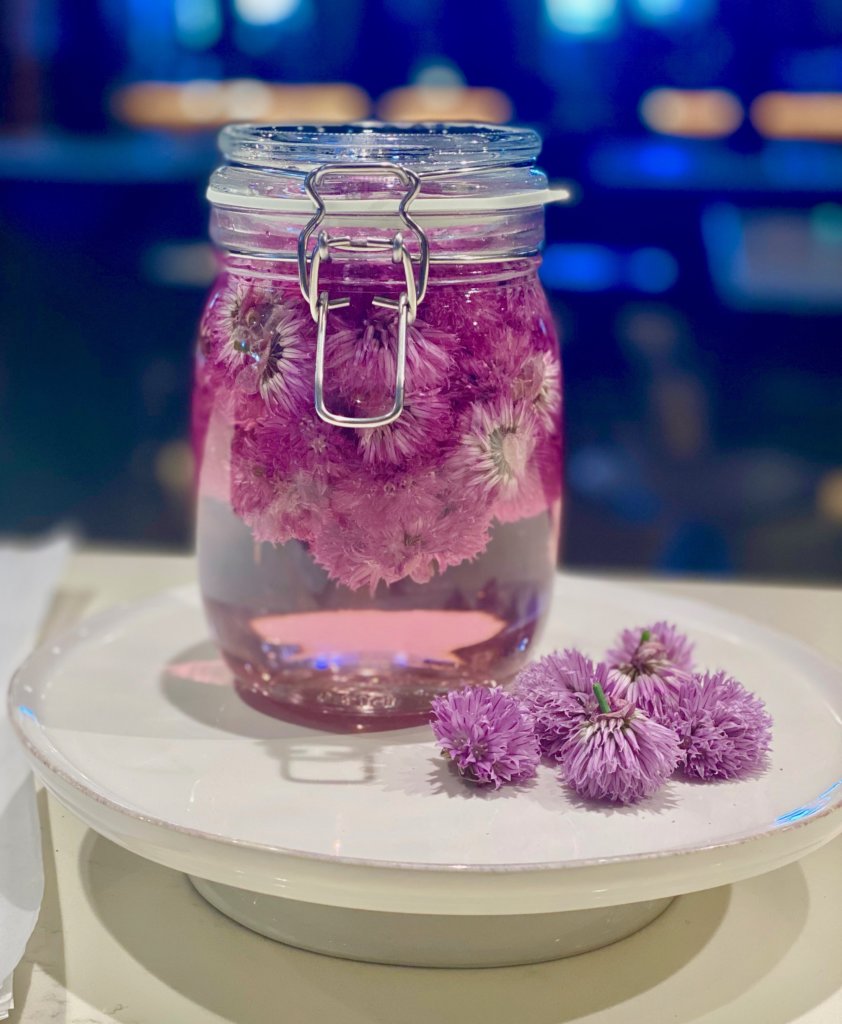
The recipe for this is so simple: fill a sterilized jar with well-rinsed chive or lilac blossoms and cover completely with white wine vinegar. Let the mixture infuse for at least a week, but longer is better. When ready to use, filter the infused vinegar through a strainer lined with a coffee filter and discard the blossoms.
There are no correct proportions, use as many blossoms as you can get your hands on, 1-100, and combine with whatever vinegar you have on hand; white vinegar, white wine vinegar, apple cider vinegar, Champagne vinegar, red wine vinegar. The vinegar should be at least 5% acidity, and the final product will last indefinitely in your refrigerator, although you will most likely use it up long before the next season begins.
Ginger and I use chive blossom vinegar in our deviled eggs, in egg or potato salad, and it’s great to use in salad dressings or to brighten up summer soups like gazpacho. It can also add zip to your favorite vinegar-based BBQ sauce. Use your imagination or stop by and ask me to use mine. I have enough ideas for everyone!!
As always, we are so happy to have everyone coming back in. Stop by the Teaching Kitchen and say “hi!” I am looking forward to seeing all of you!
See you soon!
Chef Deb
(originally published on May 30, 2023
